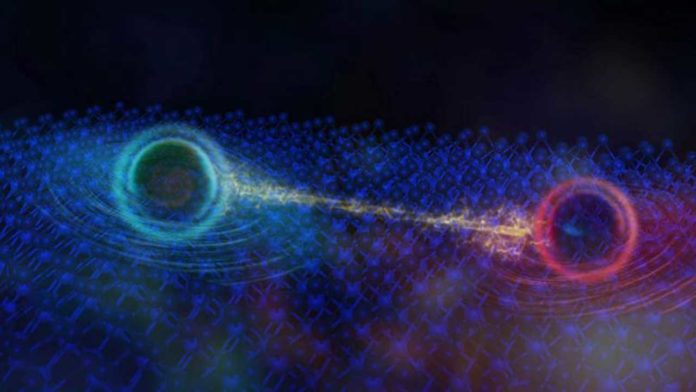A team led by Princeton physicists discovered a surprising quantum phenomenon called quantum oscillation in an insulator made from a material called tungsten ditelluride. Generally discovered in metals, the discovery of this phenomenon in insulators offers new insights into our understanding of the quantum world.
On the other hand, the discovery challenges a long-held distinction between metals and insulators. According to an established quantum theory of materials, insulators were not thought to experience quantum oscillations.
Scientists made this discovery while studying a material called tungsten ditelluride. In this study, scientists converted tungsten ditelluride into a two-dimensional material.
Using a standard scotch tape, scientists prepared the material to exfoliate increasingly, or “shave,” the layers down to what is called a monolayer — a single atom-thin layer. Thick tungsten ditelluride behaves like a metal. But once it is converted to a monolayer, it becomes a very strong insulator.
Sanfeng Wu, assistant professor of physics at Princeton University, said, “This material has a lot of special quantum properties.”
Scientists then measured the resistivity of the monolayer tungsten ditelluride under magnetic fields. The measurements surprised scientists: the insulator’s resistivity, despite being quite large, began to oscillate as the magnetic field was increased, indicating the shift into a quantum state.
As a result, the material- a very strong insulator- started exhibiting the most remarkable quantum property of a metal.
Wu said, “This came as a complete surprise. We asked ourselves, ‘What’s going on here?’ We don’t fully understand it yet.”
“There are no current theories to explain this phenomenon.”
However, scientists put forward a provocative hypothesis — a form of quantum matter that is neutrally charged.
Wu said, “Because of very strong interactions, the electrons are organizing themselves to produce this new kind of quantum matter.”
“But it is ultimately no longer the electrons that are oscillating. Instead, we believe that new particles, which we called “neutral fermions,” are born out of these strongly interacting electrons and are responsible for creating this highly remarkable quantum effect.”
Pengjie Wang, a co-first author on the paper and postdoctoral research associate, said, “Our experimental results conflict with all existing theories based on charged fermions. but could be explained in the presence of charge-neutral fermions.”
Scientists are now planning for further study into the quantum properties of tungsten ditelluride. They are particularly interested in discovering whether their hypothesis — about the existence of a new quantum particle — is valid.
Wu said, “It’s possible that neutral fermions could be used in the future for encoding information that would be useful in quantum computing. In the meantime, though, we’re still in the very early stages of understanding quantum phenomena like this, so fundamental discoveries have to be made.”
Journal Reference:
- Pengjie Wang et al. Landau quantization and highly mobile fermions in an insulator. DOI: 10.1038/s41586-020-03084-9
